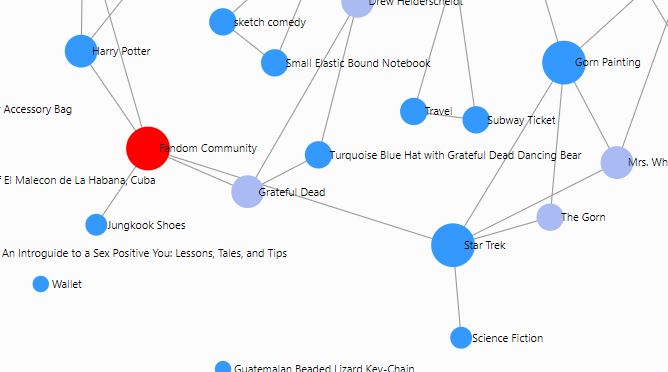Network Analysis
Network Analysis
Everything around us is connected. In the same way that a map shows how roads connect places together, “networks” show how people, events, objects, places, and even ideas are connected together by the relationships between them. Network analysis is a way of visualizing this interconnectedness and noticing what might be less obvious otherwise.
An interesting block quote from an undergraduate about their process and learning will go here and look beautiful.
We build networks by putting together “nodes” (points) and “edges” (the lines connecting points). Every node in the network represents one thing, whether it’s the Declaration of Independence, Beyoncé, a flower pot, September 11th, or love. Every edge connecting two nodes represents a relationship, showing that the two things are connected in some way. As we analyze a network, we can see how important a given node might be based on the number of its edges, which tells us how connected it is to other nodes. Finding the most important nodes and connections helps us discover a broader story - a story that might only appear when we look at the interconnected whole as more than simply a sum of its parts!
insert images of students working on network, including some text giving an example of one of the discoveries they made, plus a block quote from a student about using networks.
We used a program called Net.Create to analyze the network data from our History Harvest, but anyone can make their own network with just a pen and a piece of paper. Try drawing your social network as it exists today, with you at the center and your friends and family (and anyone else you are connected with) as nodes connected to you (and potentially, each other!). How would you draw the same network from a point in your childhood? When you compare your two networks, how might they help you see changes to your social networks over time?
